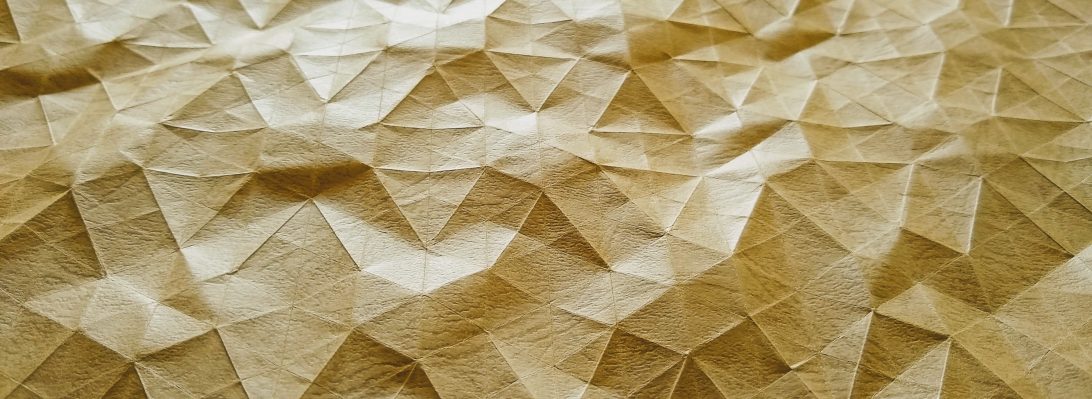A little over a year ago, my daughter as part of the very early planning stages for her wedding asked (in only the way a daughter can) if we could do something different with the flowers:
After much looking around, experimentation and reject schemes we came up with a 5-sheet rose (4 2×1 rectangles for the petals and 1 square for the calyx) secured by wire to make pose-able stems. We have folded for a year, making hundreds of blooms, to be deployed in each of the floral components of the ceremony and reception.
Bouquets
The original idea was to create enough flowers so the bouquet was a little wider than a hemisphere – each containing 3½-4 dozen roses based on 2 colour schemes: the bride wanted dark blue with occasional white blooms, the bridesmaids were predominantly white with occasional sky-blue blooms.
After the roses were stemmed and calyxed, the were wrangled into bunches, stems bent equidistant from the bud to later help in the whole ball effect.
We then bound the wire in white gaffer tape to form a preliminary handle and the tweaked the flowers to be evenly distributed and ball-shaped. On the evening before the wedding we added baby’s breath (gypsophylla) and a sheath of spathyphyllum and bound them with florists green tape (a goopy, stretchy stuff that sticks on contact).
The morning of the wedding I then frapped (macramé term) the handles with white ribbon, trimmed the tail and they were done
– every bit as lovely as I had imagined them, perfect foil to the lovely bridal party.
Buttonholes
Grooms-men, parents and siblings needed a buttonhole – single bloom, amidst baby’s breath, atop a sprig of asparagus fern from the garden.
The scheme was simple – powder blue for the grooms-men to match the bridesmaids bouquets, white for parents and siblings.
We wrapped them with florists tape to store-bought brooch pins, presto, done
 – quite smart I think and a nice tie in to the rest of the floral theme.
– quite smart I think and a nice tie in to the rest of the floral theme.
Table Decorations
To tie in the floral accents, we decided to do something with flowers on the tables, containing all the colours we used (3 shades of blue and white).
Originally it was going to be just a sheath or arrangement, but the bride to be found candle holders so I found wicker rings that encircled those, then we made circular wreaths of randomly scattered blooms.
The day before the reception, we added baby’s breath and twigs off our needed to be pruned miniature camellia from the garden, creating lush and beautiful garlands which, when the candles were lit were really magical. I was a little concerned that the waterproofing spray (a plasticiser I thought might be necessary to stop moisture making the petals droop) would increase the flammability but all was safe in the end.
Guest Gifts
We wanted each guest to leave with a little of the floral loveliness, and also tie in who was at what table, where.
We hatched a plan to make a bloom for everyone, attached an embossed leaf to each (bone-folder to impress “veins”) and hand-written names for all invited guests.
Those that could not make it will receive their blooms via some other means – nice memento of what was a lovely wedding.





































































